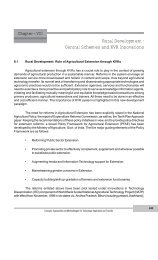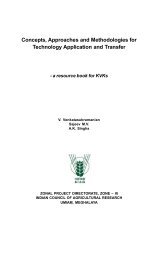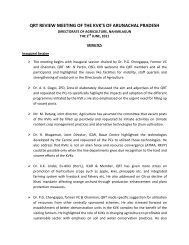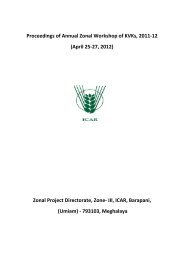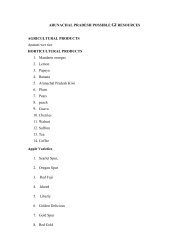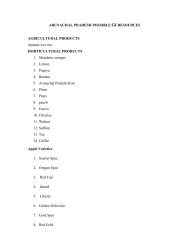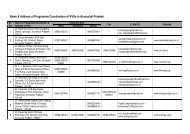Training Methodology for KVK Scientists - ICAR, Zonal Project ...
Training Methodology for KVK Scientists - ICAR, Zonal Project ...
Training Methodology for KVK Scientists - ICAR, Zonal Project ...
Create successful ePaper yourself
Turn your PDF publications into a flip-book with our unique Google optimized e-Paper software.
V<br />
V. Venkatasubramanian, Sajeev, M.V. & A.K. Singha.<br />
All of us evoke behaviour from one of the three ego states at different times. A healthy<br />
individual maintains a balance between all the three ego states. Each ego state has an appropriate<br />
time and place. To realize one’s potential in life, it is important to be able to move flexibly from one<br />
ego state to another as different situations arise.<br />
While all the people are structurally alike, in that they all have a PAC, they differ in two ways:<br />
content differences and functional differences.<br />
5.20.20.4 Content of Parent, Adult and Child<br />
Differing people will be dominated by one ego state or the other. A normal person will have<br />
a proper balance between the three ego states.<br />
The parent dominated people do not engage in rational problem solving because they already<br />
know what is right and what is wrong. They seem to have an answer <strong>for</strong> everything. The Adult<br />
dominated people can be troublesome because they will be very boring to work with. They are often<br />
“Workaholics”. They are never able to “let their hair down” and have fun. The Child dominated<br />
people, like paprent dominated people, do not engage in rational problem solving. They learned in<br />
their <strong>for</strong>mative years that they can get things by screaming and being emotional. These people are<br />
very hard to season with in many situations.<br />
A proper balance between ego states and flexibility to move from one to another depending<br />
on the situation is essential <strong>for</strong> a healthy personality.<br />
5.20.20.5 Analyzing Transaction<br />
The transaction consists of stimulus by one person and a response by another, which in turn<br />
may become a new stimulus <strong>for</strong> the other person to respond to. It is a unit of social interaction. The<br />
purpose of analysis is to discover which part of each person PAC is originating each stimulus and<br />
response. The clues to identify these are not only in words but also in tone of voice, body gesture and<br />
facial expressions. The transactions may be verbal or non verbal. The transactions may be:<br />
1. Open or complementary or parallel<br />
2. Blocked or uncomplimentary or crossed<br />
3. Ulterior or hidden or disguised transaction.<br />
142<br />
Concepts, Approaches and Methodologies <strong>for</strong> Technology Application and Transfer



